Fitbit Blaze vs. Apple Watch Sport
This article by Vincent Lanaria for Tech Times may be of interest to subscribers. Here is a section:
"Judging from the initial stock reaction, we suspect investors are concerned 1) with the ability to battle Apple and others in smart watches; and 2) the lack of updates for Charge and Charge HR, the flagship products," William Power, analyst at R.W. Baird, says.
While Fitbit is the front-runner of the fitness tracker market, observers are unsure if the company can jump into the fray of more capable smartwatches.
"When you compare Fitbit to companies like Apple and Google it doesn't have the software talent to offer a fully-fledged mobile operating system. But at this price point it's pretty good value and is a natural next step for the firm," Daniel Matte, a Canalys analyst says.
Meanwhile, Fitbit CEO James Park says that the Blaze is still focused on fitness and describes it as a "smart fitness watch," suggesting that the wearable tech isn't exactly out to go toe-to-toe with the likes of Apple.
I’m a happy Charge HR user and enjoy reviewing by heart rate chart every evening along with the number of steps I’ve taken that day. It’s not perfect and I never expected to be but it’s the best motivational gadget I’ve had for helping me keep my weight under control. The silent vibrating alarm however is a godsend for anyone who gets up well before their spouse.
I’m heading to Las Vegas this afternoon to catch the tail end of CES 2016 and look forward to checking out the health and fitness section along with the virtual reality and mind control products. I’ll be back on Tuesday and look forward to sharing my impressions.
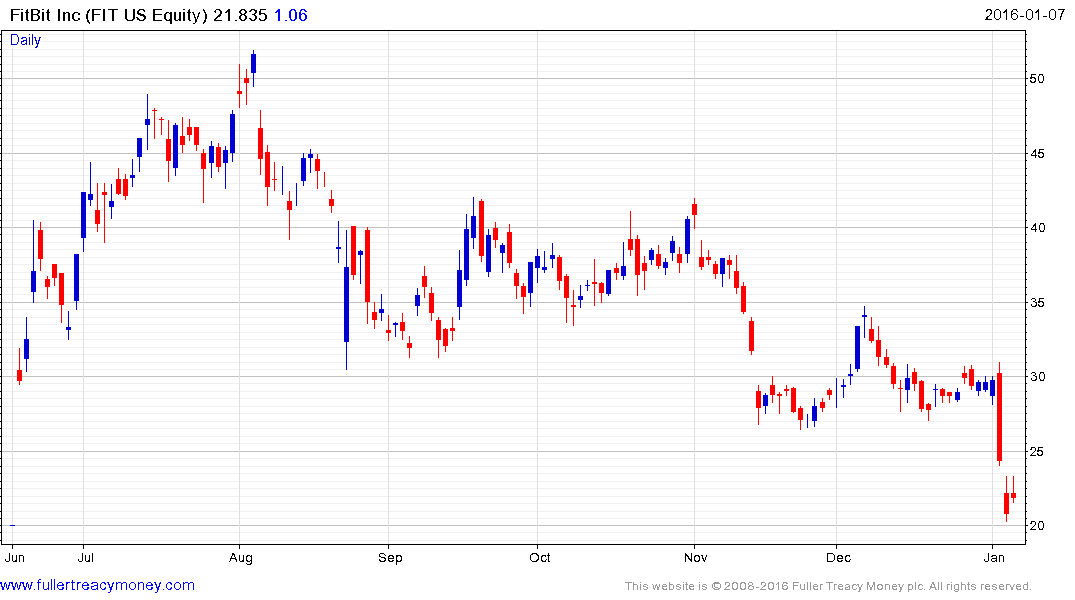
Fitbit (Est P/E 21.1 DY N/A) may be a victim of its own success because it is experiencing increased competition in the fitness tracker space not least from Under Armour which announced its suite of products this week. Fitbit dropped by a third this week but at least paused in the region of $20 yesterday. A break in the progression of lower rally highs evident since August will be required to signal a return to demand dominance beyond short-term scope for a reversionary rally to unwind the oversold condition.
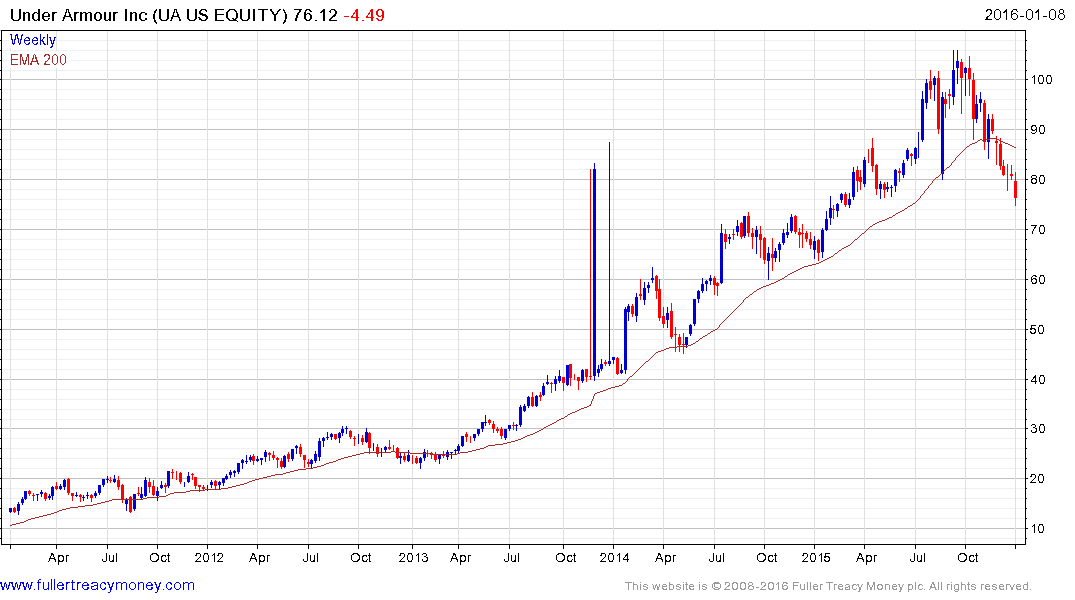
Under Armour (Est P/E 74.36, DY N/A) trended consistently higher from 2010 but dropped below the trend mean in early December and continues to extend the decline. This represents a major loss of consistency for what had been one of the most consistent trends on the Nasdaq. A sustained move above $90 would be required to question top formation completion characteristics.
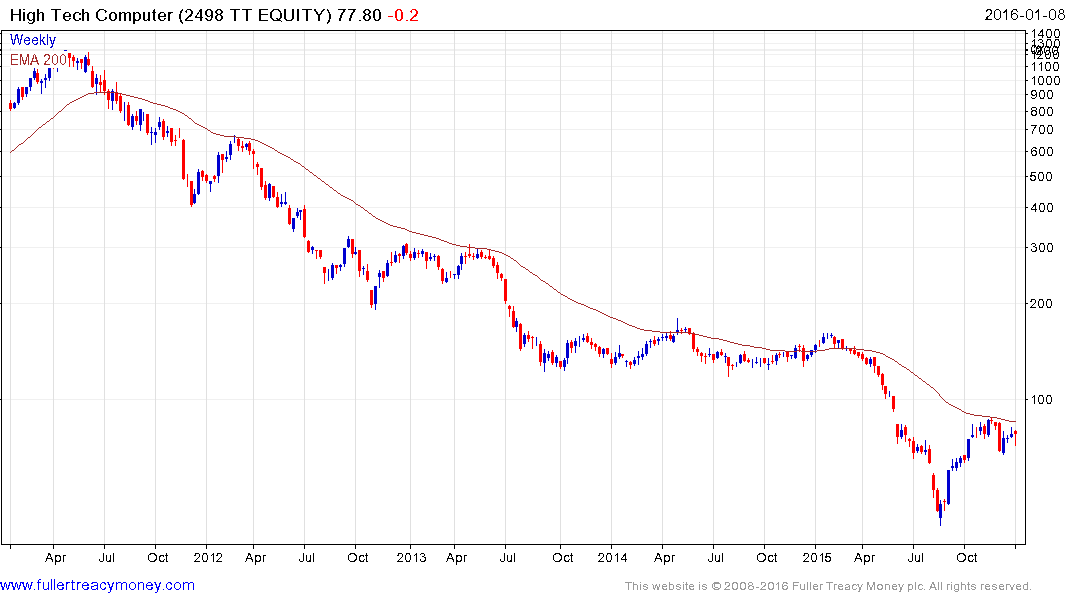
HTC is building Under Armour’s fitness products and is also in partnership with Steam to produce its virtual reality systems. The share doubled in a reversionary rally from the August lows and will need to sustain a move above the trend mean, currently near TW$85 to signal a return to medium-term demand dominance.
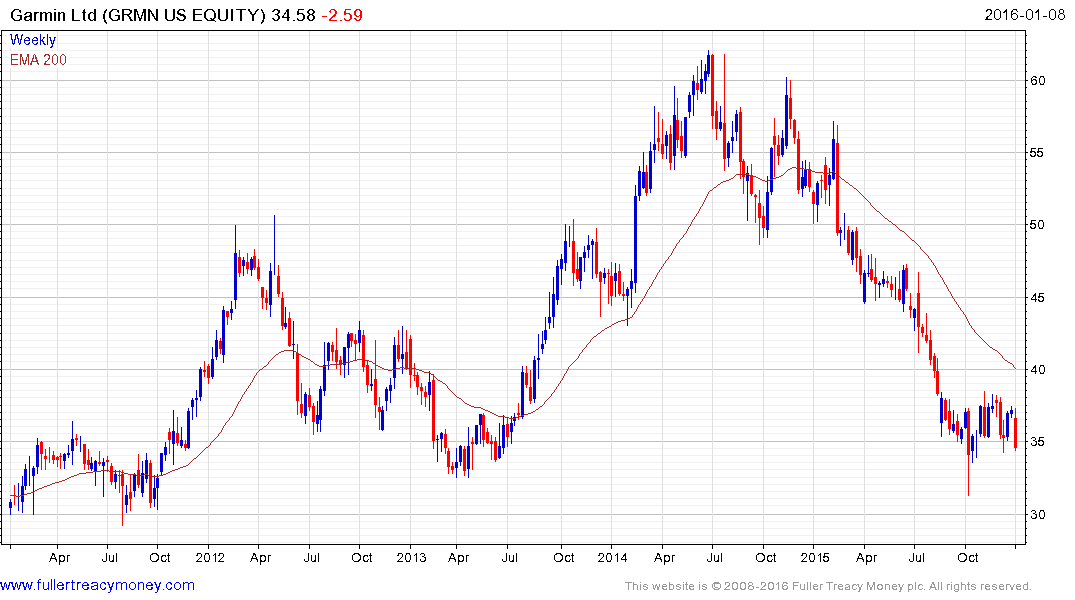
Google Maps took a chunk out of Garmin’s revenues and it has bet big on GPS enabled fitness
trackers to try and replace some of that lost revenue. However while fitness is its fastest growing segment it still accounts for less than half of the still declining revenue generative from its auto/mobile unit. The share (Est P/E 15.5, DY 5.85%) found near-term support in the region of $30 from October but its recovery was limited to a ranging consolidation that unwound the oversold condition. It pulled back sharply from the region of the 200-day MA this week and a sustained move above the trend mean would be required to question medium-term supply dominance.
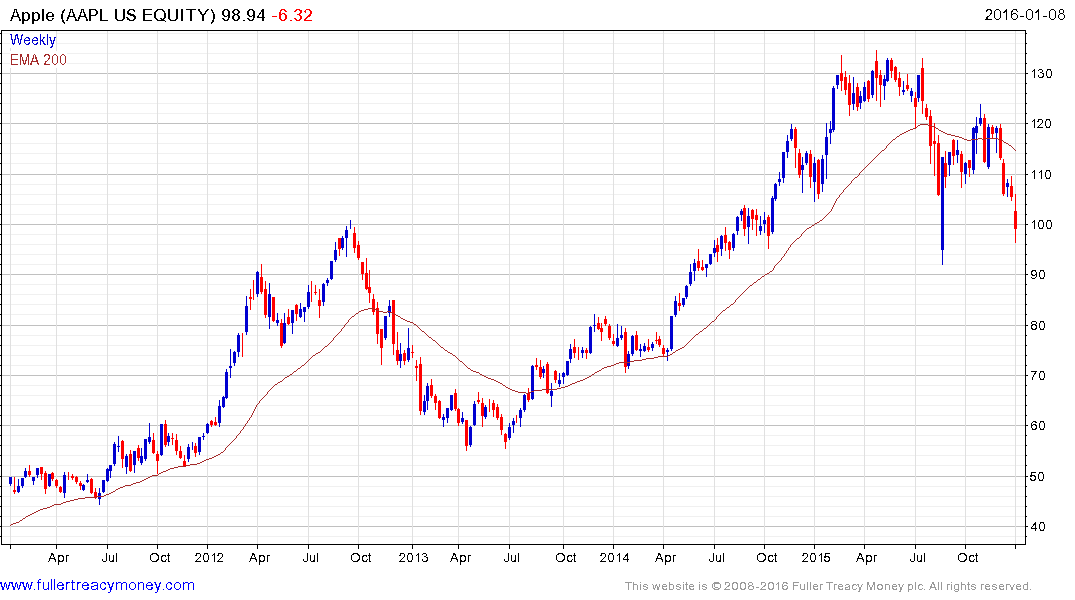
Apple (Est P/E 9.9, DY 2.16%) does not report sales of its watch separately and the share fell yesterday to retest the region of the October low. The valuation is not challenging at these levels and a short-term oversold condition is evident so there is scope for at least some steadying in the current area. However the medium-term trend has lost consistency and a sustained move above the trend mean will be required to begin to signal a return to demand dominance beyond the short term.
If above charts tell us anything it is that the fitness tracker market is becoming increasingly saturated.
Back to top

